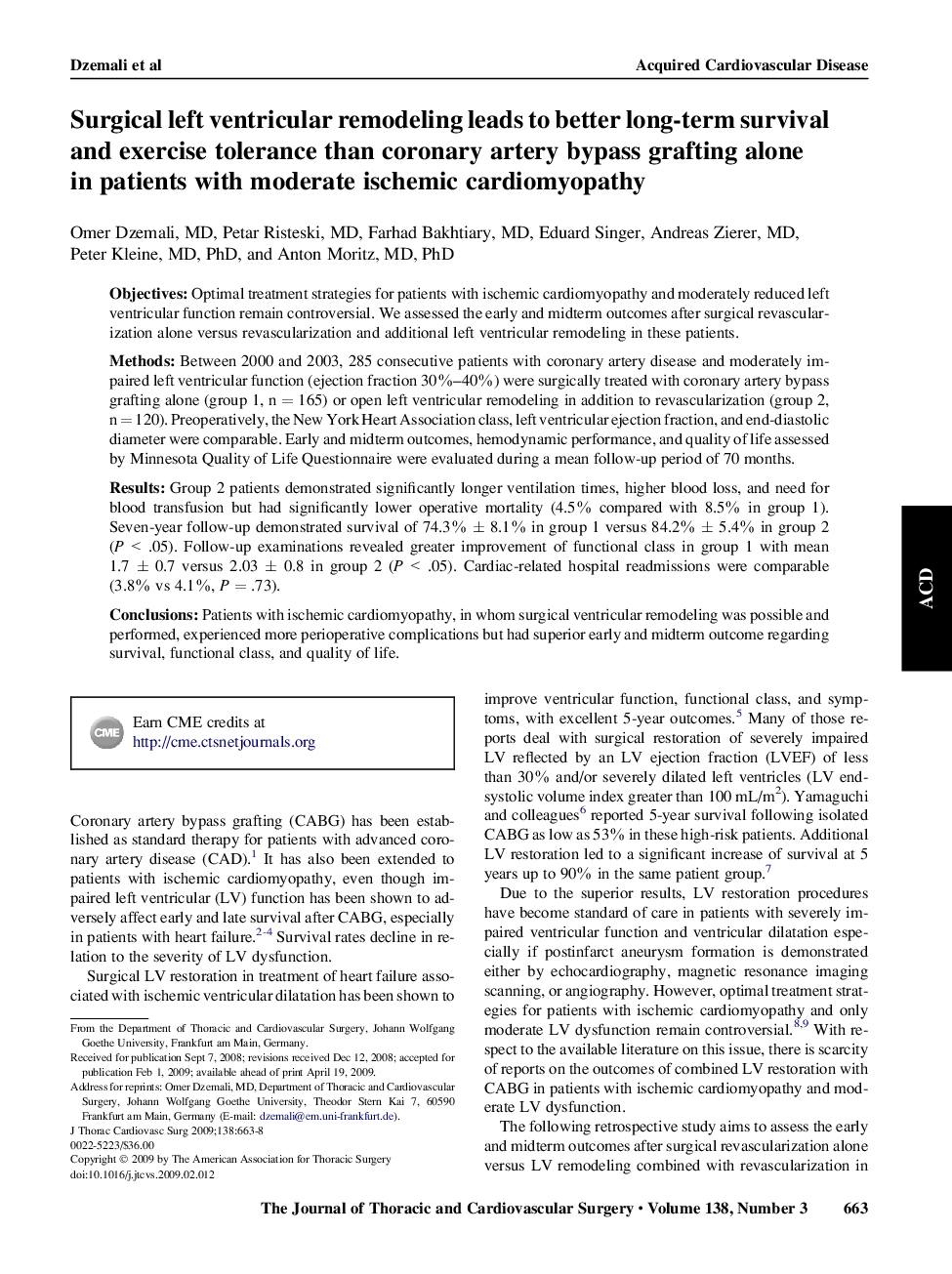| Article ID | Journal | Published Year | Pages | File Type |
|---|---|---|---|---|
| 2985569 | The Journal of Thoracic and Cardiovascular Surgery | 2009 | 6 Pages |
ObjectivesOptimal treatment strategies for patients with ischemic cardiomyopathy and moderately reduced left ventricular function remain controversial. We assessed the early and midterm outcomes after surgical revascularization alone versus revascularization and additional left ventricular remodeling in these patients.MethodsBetween 2000 and 2003, 285 consecutive patients with coronary artery disease and moderately impaired left ventricular function (ejection fraction 30%–40%) were surgically treated with coronary artery bypass grafting alone (group 1, n = 165) or open left ventricular remodeling in addition to revascularization (group 2, n = 120). Preoperatively, the New York Heart Association class, left ventricular ejection fraction, and end-diastolic diameter were comparable. Early and midterm outcomes, hemodynamic performance, and quality of life assessed by Minnesota Quality of Life Questionnaire were evaluated during a mean follow-up period of 70 months.ResultsGroup 2 patients demonstrated significantly longer ventilation times, higher blood loss, and need for blood transfusion but had significantly lower operative mortality (4.5% compared with 8.5% in group 1). Seven-year follow-up demonstrated survival of 74.3% ± 8.1% in group 1 versus 84.2% ± 5.4% in group 2 (P < .05). Follow-up examinations revealed greater improvement of functional class in group 1 with mean 1.7 ± 0.7 versus 2.03 ± 0.8 in group 2 (P < .05). Cardiac-related hospital readmissions were comparable (3.8% vs 4.1%, P = .73).ConclusionsPatients with ischemic cardiomyopathy, in whom surgical ventricular remodeling was possible and performed, experienced more perioperative complications but had superior early and midterm outcome regarding survival, functional class, and quality of life.
